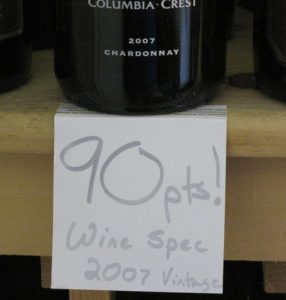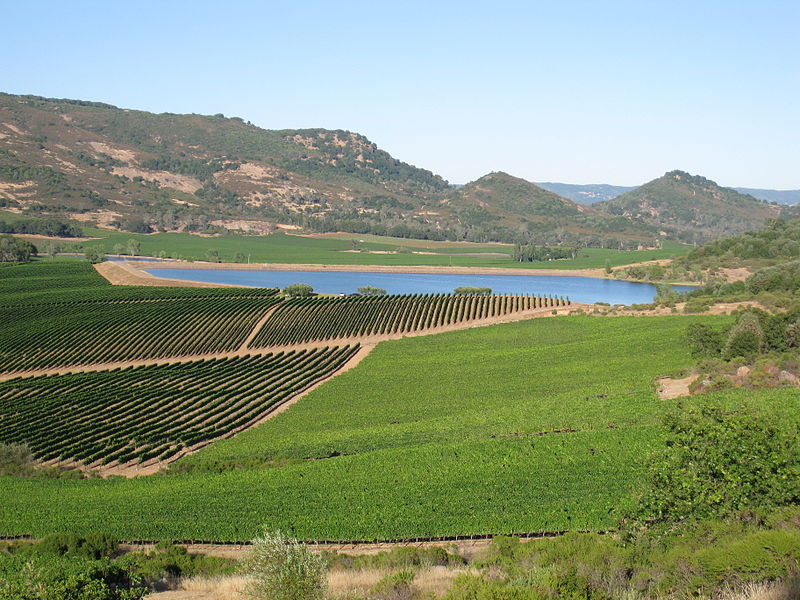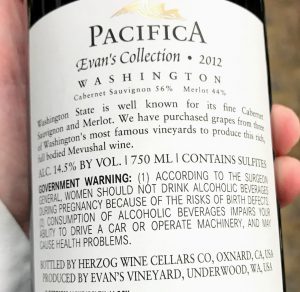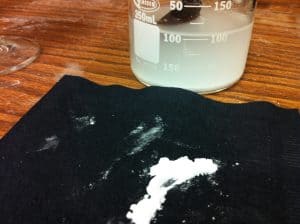For a follow up to this post, check out Millennial Math — Where’s the value in wine?
Ah, Millennials. The infamous murderers of numerous industries and institutions. Now, it appears that wine is the latest victim in our crosshairs.

As a millennial myself, my first instinct to such breathless takes is to roll my eyes. There are only so many times you can be blamed for economic homicide before it becomes ho-hum. But as a student of wine business and marketing, I know that there are embers underneath all the smoke and silliness.
Because–apocalyptic hyperbole aside–the wine industry does have a “Millennial Problem.”
It’s boring as fuck.
Losing the Millennial Market
This recent hand-wringing over Millennials was provoked by Silicon Valley Bank’s State of the Wine Industry report released earlier this month. The headline grabber was that Millennials were not adopting and consuming wine at the rate of previous generations.
Rob McMillan, the founder of SVB’s Wine Division, commented on his blog reasons why he thinks Millennials might become a generation of “lost wine consumers”.
I’m skeptical about the weight he gives to neo-prohibitionism and health concerns. Cocktails, energy drinks, cannabis, coffee, craft beer, whiskey and other hard alcohols have to deal with negative health-messaging as well. Yet, these categories are growing and taking “throat share” away from wine–particularly among Millennials.
But McMillan absolutely hits it square on the head when he points out how boring wine is making itself seem to Millennial consumers.
We are quickly becoming your parents beverage, and being your parents anything is always the kiss of death for consumer products.
Wine is Boring ..
To this young consumer with a short-attention span – activity, health, the environment, causes with an egalitarianism theme and fun are important both conceptually and as values. The wine industry is just not hitting any of those elements to attract their attention. — Rob McMillian, The Lost Wine Consumer of 2019, 1/27/2019
But it doesn’t have to be this way.
Do you know why Merlot sales are still sluggish?

The only thing in this picture that gives me joy is the decanter. It’s my ideal shape for form and function.
It’s not because of a movie that came out when the youngest Millennials were still playing on their elementary school playgrounds.
No, it’s because it is what our parents and grandparents drink. And who wants to choose that when you’re out on a date or sitting at home watching documentaries about the Fyre Festival?
It’s boring and anything boring is not worth the time, money or calories.
If there is one area I would give credence to about health concerns impacting wine sales, it is that Millennials and the upcoming Generation Z are not interested in just getting drunk.
What we put into our bodies has to give us some tangible benefit beyond intoxication. It has to edify us–mentally, spiritually, physically or emotionally. To Marie Kondo-it, we want the things in our lives to bring us joy.
So how can wine bring joy back to Millennial consumers instead of boring them to tears?
Combating Wine’s Boredom Factor
A tried and true tenet of Marketing 101 is that successful companies stand out from the pack. Especially in a crowded marketplace, you need to find ways to catch the consumer’s attention and show them that you’re different.

Yawn…
That’s still true with Millennials. This is not an area where marketers need to re-invent the wheel. But what wineries do need to reconsider is how they are trying to distinguish themselves.
Oh, you got a great 90+ score from a critic?
That’s nice. So did several thousand other wines.
Oh, your vineyard has unique terroir and you let the wine reflect the site?
That’s nice. Most all your competitors say that too.
Oh, you won whatever medals from whatever wine competitions?
That’s nice. Look at all that bling being passed out like candy.
Oh, you have heavy screen printed bottles, colorful die-cut labels and REALLY long corks?
That’s nice. How much of that am I paying for in the retail cost of your wine? And why should I even bother when I can get so many other wines in less fancy packaging for a better price?
You can’t market to us the same way you did to our parents.

What a lovely, well maintained and cared for vineyard in Napa!
Kind of looks like all the other lovely, well maintained and cared for vineyards in Napa.
In a talk on how Napa wineries can “future proof” themselves, Paul Mabray, of the market research firm Emetry, noted that the industry can’t stay back in the 1970s and continue to do things like they did when Robert Mondavi wrote the playbook on marketing wine.
Yet, that is precisely what wineries today are trying to do. And then they wonder why Millennials aren’t responding?
To reach Millennials today wineries have to come up with a new playbook. I don’t think anyone has all the answers (I sure don’t), but I can tell you two things that will undoubtedly help.
1.) Stop “Doubling Down” on what’s been done before
Seriously. The absolute worse thing that a winery (or wine region) can do is assume that what’s been successful in the past (i.e., Cab and Chard) is going to continue to be successful in the future. Sure, the gravy train is running along smoothly now but the track up ahead is unfinished. What is the backup plan when the nails and steel run out?
Wineries wanting to capture the Millennial market have to go back to the basics of Marketing 101–they have to stand out and be different.
You don’t do that by offering us the same ole, same ole. You don’t do that by offering us what our parents drank.

The Wine of Mencía.
Anyone who went to high school/college in the 2000s should get that.
You do that by offering us something different–different grapes, different blends, different stories.
But Amber, consumers often need to be “educated” on these different wines before they buy them.
That’s true. Folks usually don’t look at a wine list and randomly select a bottle of Mencía, Touriga Nacional or Pecorino. People need a helpful nudge to try these obscure grapes.
However, you don’t have to give them a Wikipedia article. For many consumers, the grand sum of education they need about a new wine can be delivered in two lines.
“This is something different from __________ you should try. It’s definitely not the kind of Cab/Merlot/Chardonnay/Pinot grigio that your parents would buy.”
And that’s it. That is enough to hook a lot of Millennial consumers.
Sure, there will be a few geeks like me who want to know a little more. Your tasting room staff and the restaurant sommeliers you partner with should be well trained to answer those questions. That is why they’re important influencers.
But the vast majority of Millennial consumers care more about the experience of trying something new than the nitty-gritty details.
2.) Show the people behind the wine
Millennials crave authenticity and transparency. They like a story that they can connect to and share with friends and family.
But when the wine world talks about “authenticity”, what is the first (or only) thing they talk about? Terroir, vineyards and farming.

“Being famous is great, it’s not like bad or horrible or anything.” — Dave Chappelle
Now that’s all fine and good. As a geek, I love that stuff. But I am the minority. For most Millennials, hearing talk about soils and climate and all that is marketing gobbly-gook. Especially when they are hearing the same spiel from every winery and reading it on the back of every wine bottle.
We get it. Every vineyard claims to be special. Every winemaker claims to take care of the land through careful farming and to let the site speak for itself. Gold star for you.
Yet there is one unique thing that wineries (especially small wineries) have that you hardly hear a whisper about–their people. The very heart and soul of their brand.
It always baffles me how little that is promoted–especially because the best showcase of personality is a person.
Showing personality through Social Media
By far the most significant area that wineries’ fall flat in is how they use social media. I’ve talked before about the woeful state of many wineries’ Twitter use but those same woes can be seen on Facebook and Instagram.
Bottle Porn is useless.

Pics like this probably sell more take-out meals then they do wine.
Great use of a winery’s time and social media feed, eh?
Again, this is what everyone else is doing. So what makes your bottle porn special? And, no, a fancy near-impossible-to-replicate food dish next to the bottle doesn’t do much to keep us from just scrolling by. Granted, if we’re hungry, it may encourage us to close Instagram for a moment to order something from Door Dash or Uber Eats.
Bottle porn and food pics are recipes for boredom. If you want to capture people’s attention, study after study has shown that featuring people in your posts is the way to go. For wineries, you want this to be the people who are the personalities behind your brand.
Behind-the-Scenes Story Telling
It’s kind of ironic that the wine industry has such a boredom factor when there is so much cool stuff going on. At least it’s cool to consumers who aren’t surrounded by it 24/7.
Every winemaker I know has stories about how taken back they are at the giddiness of consumers at barrel tastings. Sommeliers, wine writers and buyers get blasé checking out barrel rooms because they’ve seen them before. But for the average wine drinker, it’s quite a thrill.
I remember at one of my internships when we were doing pump overs, a few consumers in the tasting room heard the sound of the pump and wanted to know what was going on. One of the staff brought them into the winery to see and they thought it was the coolest thing ever.
So why not try to “bottle” that excitement?

During this Facebook Live, we’re going to learn the difference between PCP and PVPP (polyvinylpolypyrrolidone). While both are vegan-friendly, only one of these will help remove bitter tannins from wine.
Nearly every day in the winery or the vineyard is a chance to do a quick Facebook live or Instagram story. Right now, producers across the Northern Hemisphere are pruning their vines. Give a quick 2-3 minute tutorial on your Facebook page. Show us what’s the difference between cane and spur pruning and why this time of the year matters.
Again, not everyone will care about those nitty-gritty details. But they will care about a winery giving them something different to experience on their social media feed.
If you want a Masterclass in how to use social media to show personality in a brand, check out the Instagram accounts of the Kitzkes of UpsideDown Wine (@usdoingwine) and the Garretts of Serrano Wine (@serrano_wine). Spoiler alert. They’re both Millennial-owned wineries so they may know a thing or two about not being boring.
These behind-the-scenes moments don’t have to have fancy production value. In fact, it’s even better if they don’t. That makes them feel more personable, more sincere, more authentic.
And that is far less boring than being told about yet another 90+ rated Cab and Chard that was “…sourced from the finest vineyards, handcrafted to let our unique terroir come through.”
Oh please, somebody get me a joint.
